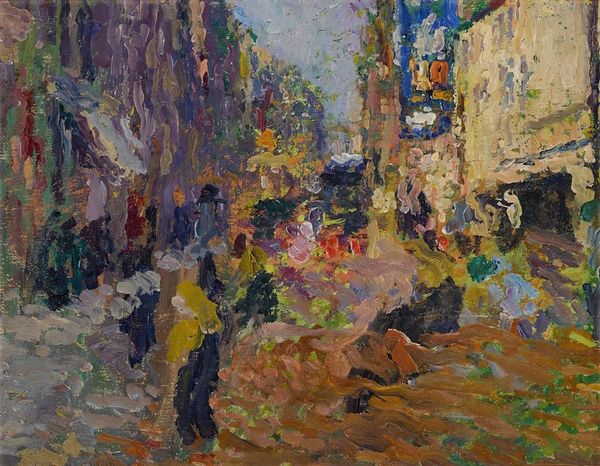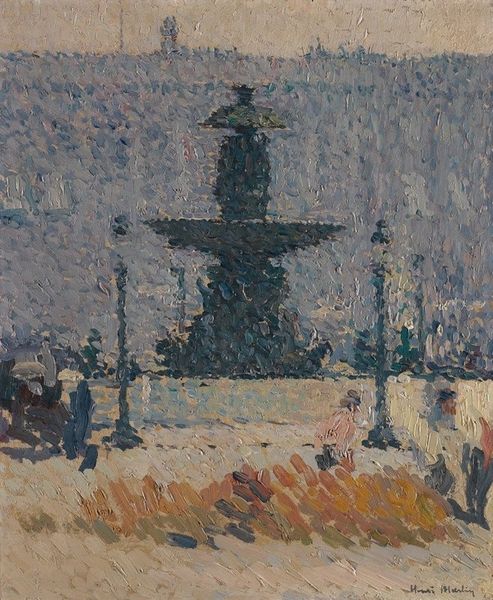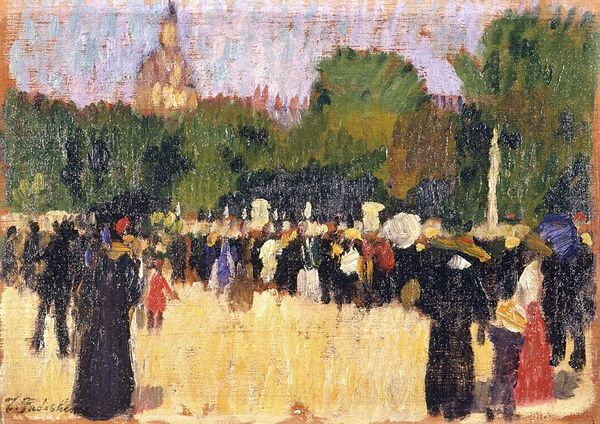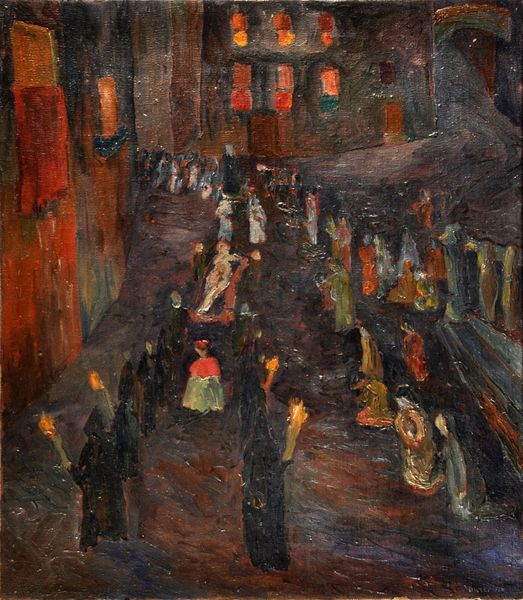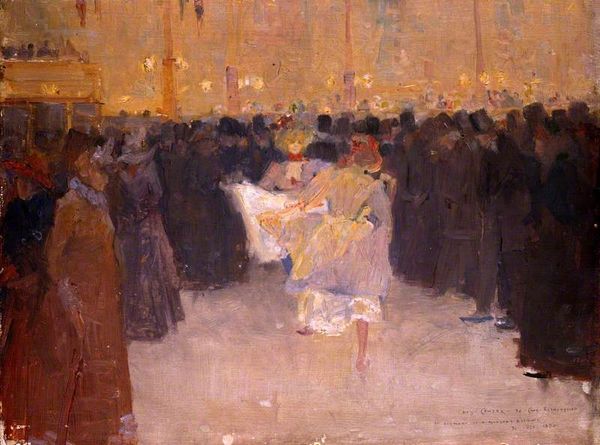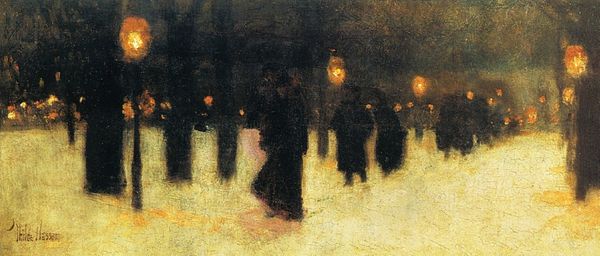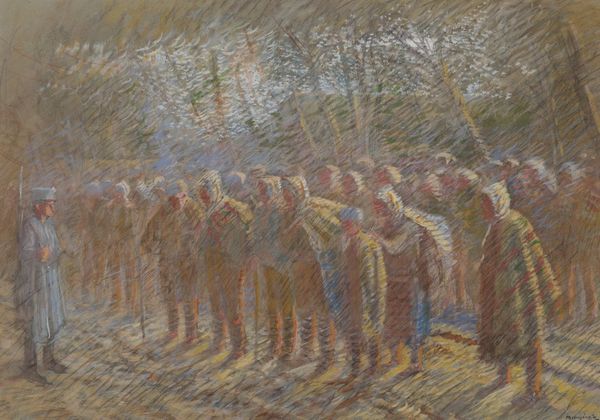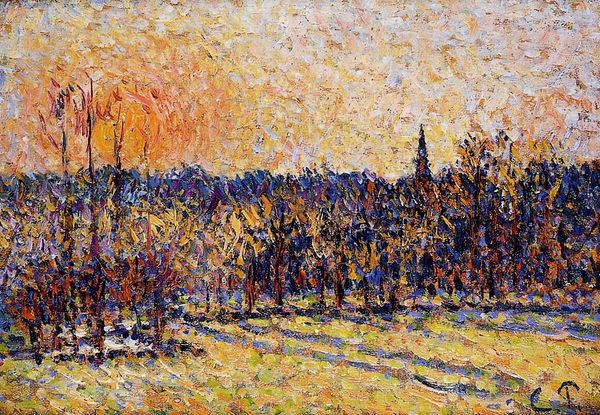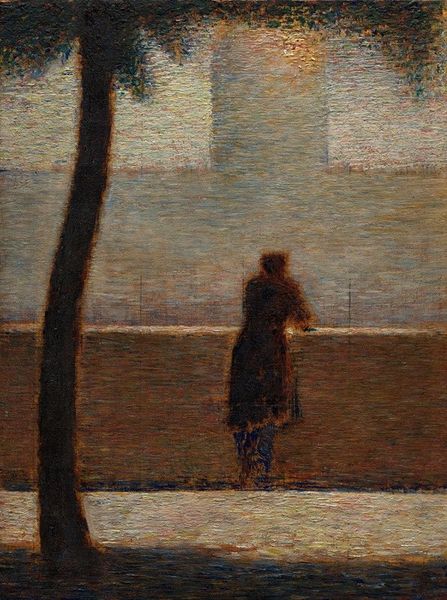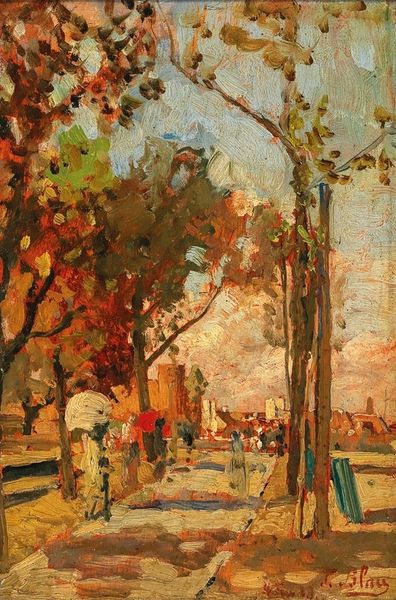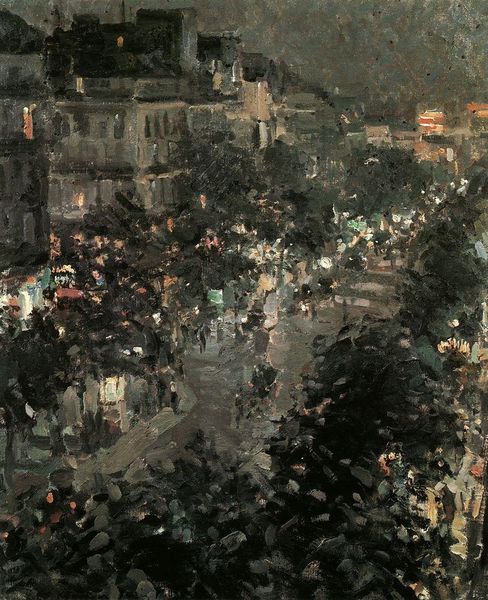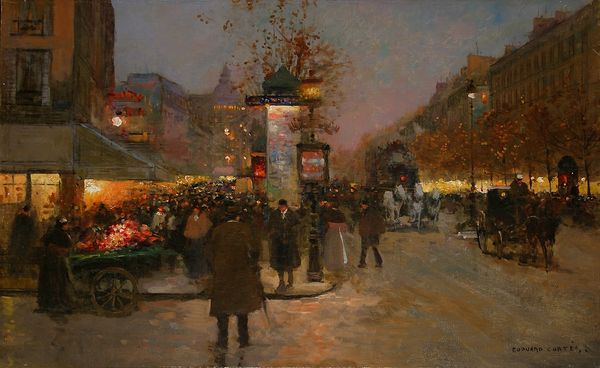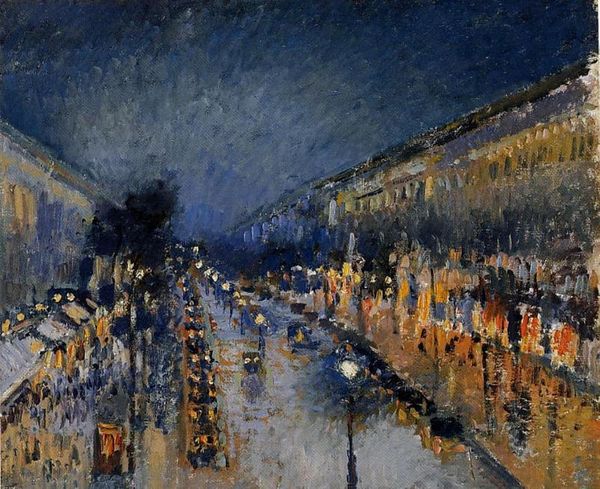
Copyright: Public Domain: Artvee
Editor: Maximilien Luce’s "Paris, Les Boulevards, La Nuit," painted around 1893, is quite the vibrant cityscape executed in oil. I’m struck by the lively dots of color—it almost feels like the painting itself is breathing. What symbolic weight do you think these choices carry? Curator: Well, consider that pointillist technique, those dabs of pure color, less about accurately representing visual reality and more about evoking feeling, capturing the ephemeral experience of the modern city. Those lights blurring, the sense of crowds flowing...does that suggest anything about how Parisians might have experienced their city at night? Editor: It definitely feels fleeting and maybe even a bit anonymous, with all those blurry figures. Is there something specific about Parisian history or culture that Luce might be commenting on here? Curator: Think about the social changes of the late 19th century: rapid urbanization, increased social mobility, burgeoning public spaces. Nightlife transforms – the city as a spectacle, but also, perhaps, alienation within a crowd. What symbols of change do you notice here, beyond the basic representation? Editor: I guess those gas lamps burning brightly are a new fixture… and perhaps the sheer number of people out at night? So maybe those elements together tell a story of Parisian transition. Curator: Precisely! Luce uses the evolving symbolism of city life to reflect and almost record the pulse of change and the emotional implications this new reality has on its citizens. Each color acts as a character, an idea, in an ever shifting, always connected whole. Editor: It’s fascinating to consider how deeply a painting like this, seemingly a simple street scene, can be rooted in its time and place. Thank you, it adds so much.
Comments
No comments
Be the first to comment and join the conversation on the ultimate creative platform.
